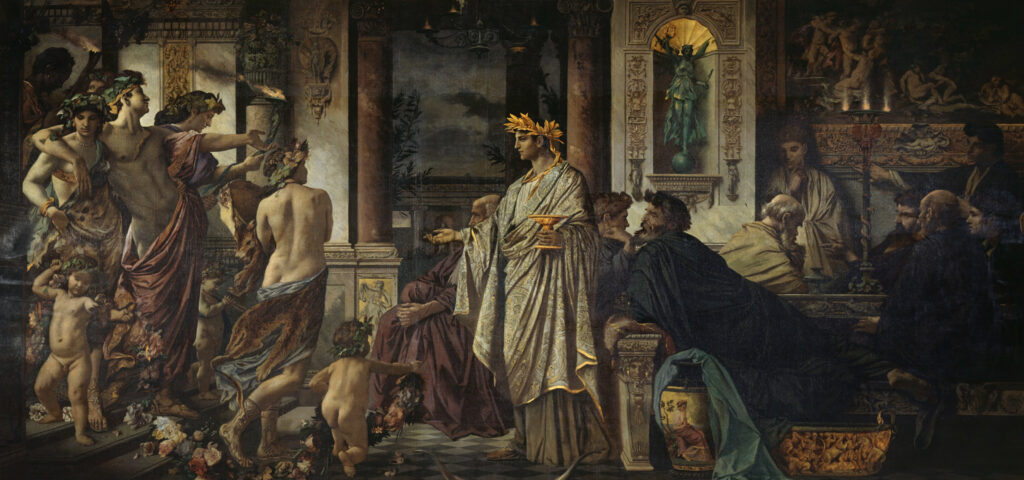
Beauty has fascinated humanity for millennia. From the symmetry of a flower to the grandeur of the cosmos, the question “What makes something beautiful?” has been central to philosophy, art, and psychology. Aesthetics, the branch of philosophy that studies beauty and taste, has produced varied theories attempting to define and understand this elusive concept. This article explores these theories, key thinkers, and the evolving nature of aesthetic judgment.
Ancient Theories of Beauty: Objectivity and Harmony
Plato (427–347 BCE): Beauty as Ideal Form
Plato saw beauty as an absolute, existing in the world of Forms—a realm beyond the physical world. In his famous work Symposium, he described beauty as something that moves from appreciation of physical forms to an understanding of the Form of Beauty itself, which is eternal and unchanging. According to Plato, something is beautiful because it participates in this ideal Form.
Aristotle (384–322 BCE): Beauty in Order and Proportion
Aristotle took a more empirical approach. In Poetics and Metaphysics, he argued that beauty arises from order, symmetry, and proportion. He saw beauty as an objective quality rooted in mathematical harmony—an idea that influenced later Renaissance artists and thinkers.
Pythagoras (570–495 BCE): Mathematical Beauty
Pythagoras and his followers believed that beauty was inherently tied to mathematics. The Golden Ratio (1.618) was considered a divine proportion that dictated harmony in nature, music, and architecture. This idea is still widely used in design and aesthetics today.
Medieval and Renaissance Perspectives: Beauty and Divinity
Plotinus (204–270 CE): Beauty and the Soul
As a Neoplatonist, Plotinus argued in The Enneads that beauty is not just in physical objects but is linked to spiritual transcendence. He believed that contemplating beauty leads the soul closer to divine truth.
Thomas Aquinas (1225–1274): Beauty and Goodness
In medieval Christian philosophy, Thomas Aquinas connected beauty with goodness and divine perfection. He outlined three essential properties of beauty:
- Integritas (Wholeness) – A thing must be complete.
- Consonantia (Harmony) – Its parts must be in proportion.
- Claritas (Radiance) – It must reveal its essence clearly.
Aquinas’ theological aesthetics had a profound influence on religious art and architecture.
Enlightenment and Subjectivity: Beauty in the Eye of the Beholder?
David Hume (1711–1776): Subjective Taste
Hume, in Of the Standard of Taste, argued that beauty is not inherent in objects but exists in the perceiver’s mind. He acknowledged, however, that aesthetic judgment can be refined through education and experience.
Immanuel Kant (1724–1804): The Aesthetic Judgment
Kant’s Critique of Judgment is one of the most influential works in aesthetics. He distinguished between:
- The Agreeable (subjective pleasure, e.g., liking a flavor).
- The Good (moral value).
- The Beautiful (aesthetic appreciation, judged universally but without a concept).
For Kant, beauty is “purposiveness without purpose”—we find something beautiful not because it serves a function, but because its form appears harmonious to us.
Modern and Contemporary Theories: Expanding Beauty
Friedrich Nietzsche (1844–1900): Beauty as Power
Nietzsche challenged traditional aesthetics in The Birth of Tragedy, arguing that beauty is not just order and harmony but also includes the chaotic and wild (Dionysian beauty). He believed that true beauty evokes a powerful, almost dangerous, emotional response.
Clive Bell (1881–1964): Significant Form
Bell, an art critic, proposed in Art (1914) that beauty comes from significant form—the arrangement of lines, shapes, and colors that provoke an aesthetic emotion, independent of realism or content.
John Dewey (1859–1952): Aesthetic Experience
Dewey’s Art as Experience (1934) argued that beauty is not just in objects but in the interaction between the observer and the artwork. Aesthetic experience is a dynamic process, shaped by cultural and personal contexts.
Postmodern Views: Beauty as Cultural Construct
Postmodernism challenges the idea of universal beauty, arguing that it is socially constructed. Roland Barthes, Jacques Derrida, and Jean Baudrillard suggest that beauty is influenced by media, cultural norms, and changing societal values. Today, we see this in debates about beauty standards in fashion, advertising, and digital media.
Beauty in the Age of Technology
With AI-generated art, virtual reality, and digital design, aesthetic experiences are evolving. The question remains: Is beauty a universal truth, a subjective perception, or a social construct? Perhaps, as history shows, it is all three, depending on perspective and context.
As we continue to explore aesthetics, beauty remains a dynamic, ever-evolving concept—one that reflects not only what we see but also how we think and feel.
References
- Aristotle, Poetics and Metaphysics.
- Bell, Clive. Art (1914).
- Dewey, John. Art as Experience (1934).
- Hume, David. Of the Standard of Taste (1757).
- Kant, Immanuel. Critique of Judgment (1790).
- Nietzsche, Friedrich. The Birth of Tragedy (1872).
- Plato, Symposium and Republic.
- Plotinus, The Enneads.
- Thomas Aquinas, Summa Theologica.
This journey through aesthetics shows that beauty is not just an appearance—it is an idea, a feeling, a philosophy that continues to shape human experience.